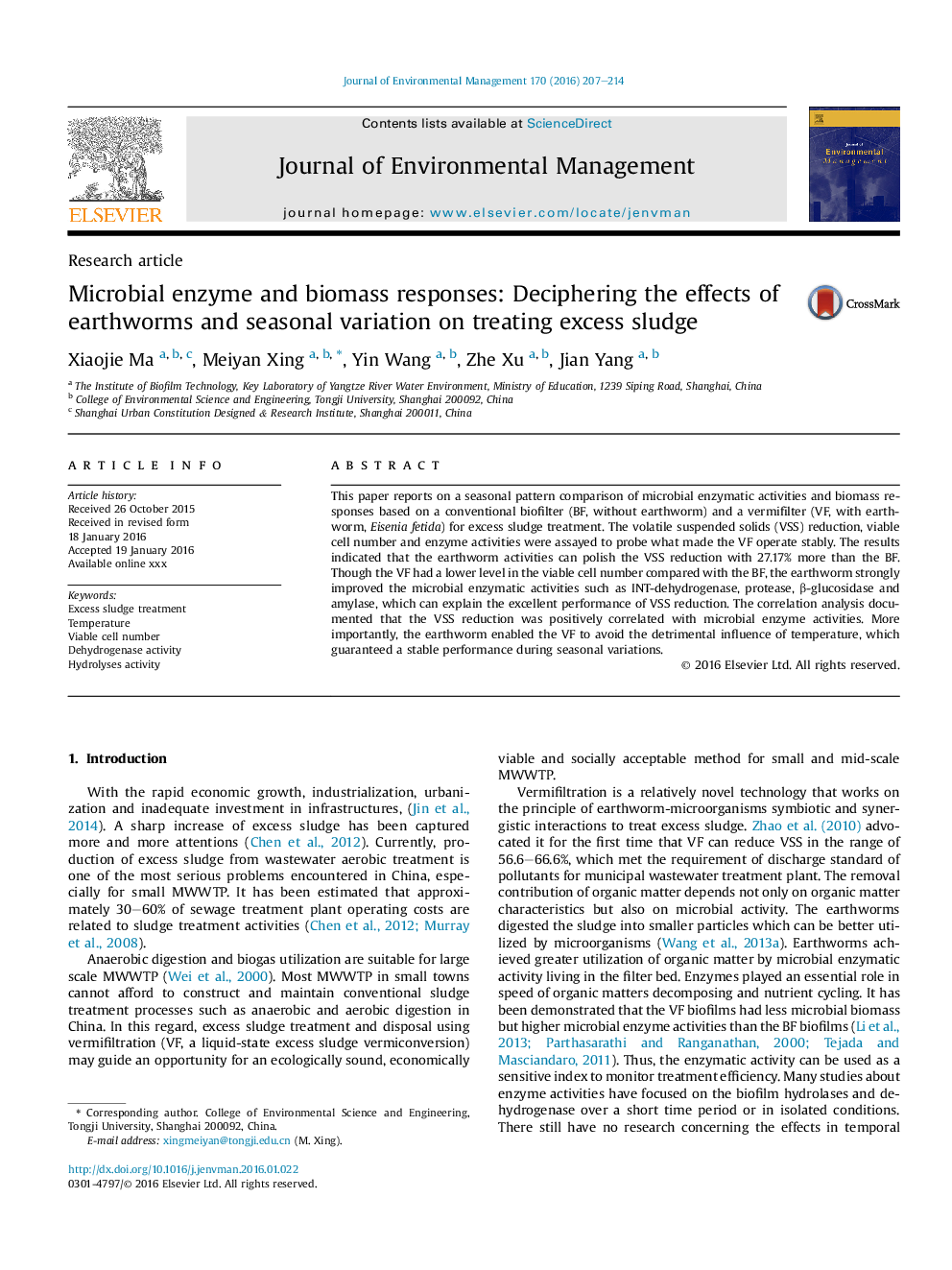| Article ID | Journal | Published Year | Pages | File Type |
|---|---|---|---|---|
| 7481006 | Journal of Environmental Management | 2016 | 8 Pages |
Abstract
This paper reports on a seasonal pattern comparison of microbial enzymatic activities and biomass responses based on a conventional biofilter (BF, without earthworm) and a vermiï¬lter (VF, with earthworm, Eisenia fetida) for excess sludge treatment. The volatile suspended solids (VSS) reduction, viable cell number and enzyme activities were assayed to probe what made the VF operate stably. The results indicated that the earthworm activities can polish the VSS reduction with 27.17% more than the BF. Though the VF had a lower level in the viable cell number compared with the BF, the earthworm strongly improved the microbial enzymatic activities such as INT-dehydrogenase, protease, β-glucosidase and amylase, which can explain the excellent performance of VSS reduction. The correlation analysis documented that the VSS reduction was positively correlated with microbial enzyme activities. More importantly, the earthworm enabled the VF to avoid the detrimental influence of temperature, which guaranteed a stable performance during seasonal variations.
Related Topics
Physical Sciences and Engineering
Energy
Renewable Energy, Sustainability and the Environment
Authors
Xiaojie Ma, Meiyan Xing, Yin Wang, Zhe Xu, Jian Yang,
